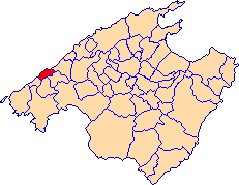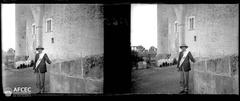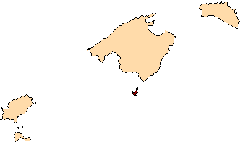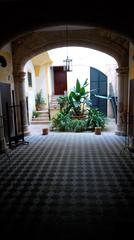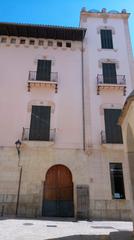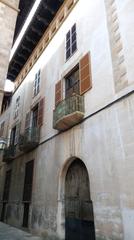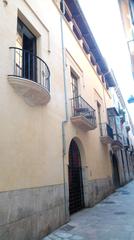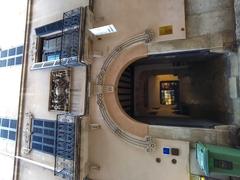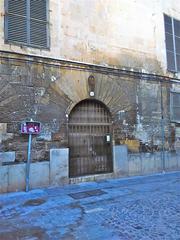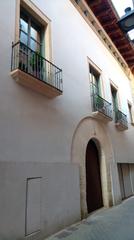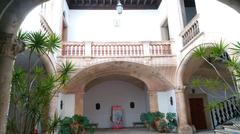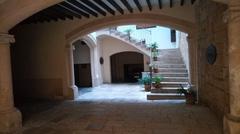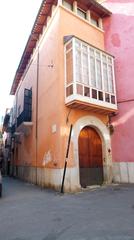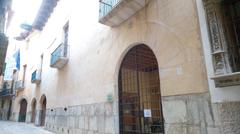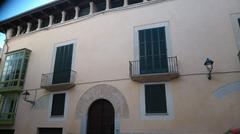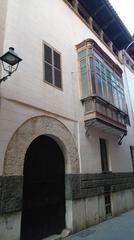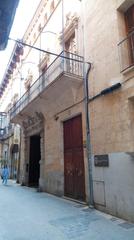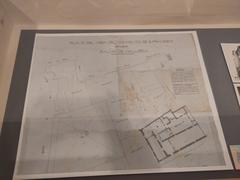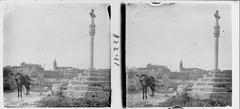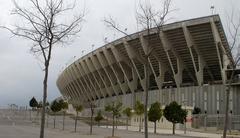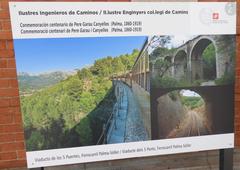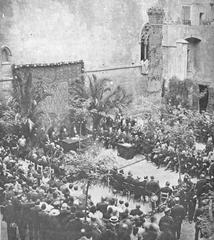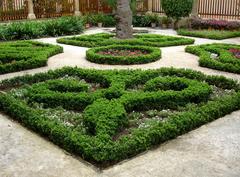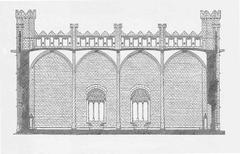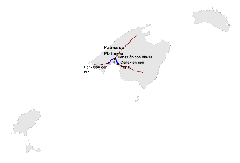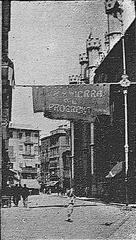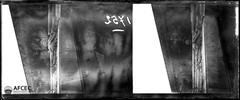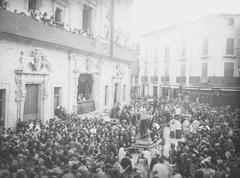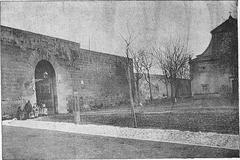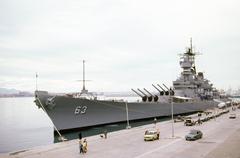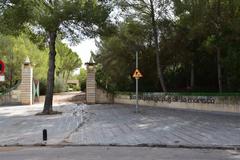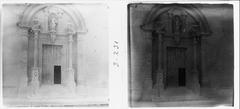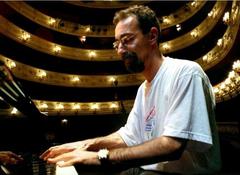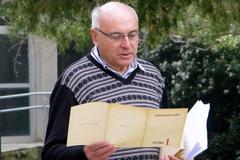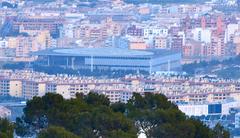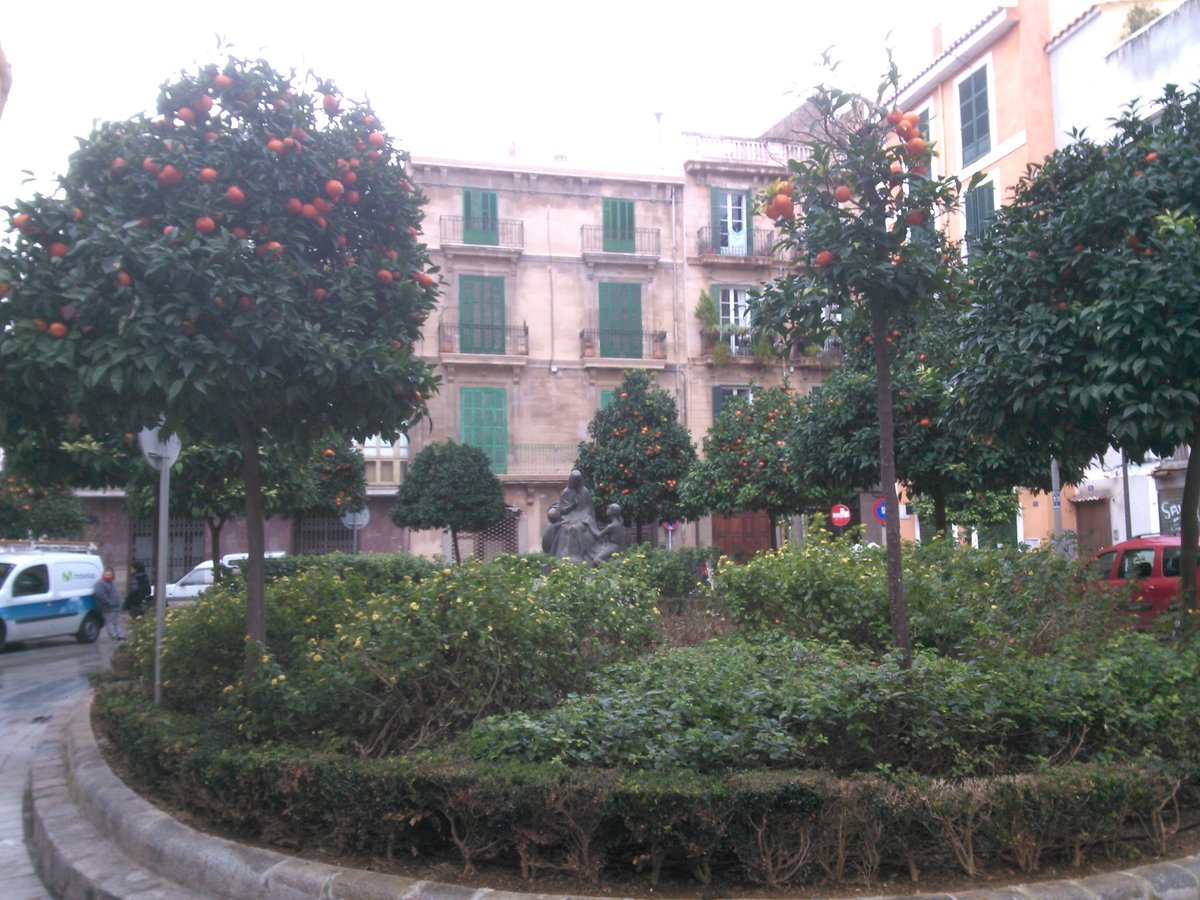
Visiting Hours, Tickets, and Historical Sites in Beverly Hills, Palma, Spain
Date: 17/08/2024
Introduction
Palma de Mallorca, the capital of the Balearic Islands, offers a unique blend of historical significance, architectural wonders, and modern amenities. Known for its rich history that spans Roman, Byzantine, Moorish, and Christian influences, this Mediterranean gem has evolved into a premier tourist destination. The city’s old quarters are adorned with iconic landmarks such as the Gothic Cathedral of Santa Maria (La Seu), Bellver Castle, and the Almudaina Palace, reflecting its diverse cultural heritage (Britannica, Wikipedia). Visitors are often drawn to the luxurious lifestyle and scenic beauty of Son Vida, dubbed the ‘Beverly Hills of Mallorca,’ which attracts celebrities and high-net-worth individuals seeking privacy and exclusivity (Idealista). Whether you’re exploring the historic old town, indulging in local culinary delights, or relaxing on pristine beaches, Palma de Mallorca promises an unforgettable experience. This comprehensive guide covers everything you need to know about visiting this enchanting city, from its historical background and top attractions to practical visitor tips and cultural etiquette.
Table of Contents
- Introduction
- History of Palma de Mallorca
- Architectural and Cultural Heritage
- Beverly Hills of Palma: Son Vida
- Visitor Tips for Exploring Palma
- Conclusion
- FAQ
Exploring Palma de Mallorca: History, Visiting Hours, Tickets, and Top Attractions
History of Palma de Mallorca
Roman and Byzantine Periods
Palma de Mallorca was established as a Roman camp on the remains of a Talaiotic settlement, a prehistoric culture known for its megalithic structures. Conquered by the Romans in 123 BCE, it became a significant commercial hub due to its strategic Mediterranean location (Britannica). Following the fall of the Western Roman Empire, Palma faced Vandal raids but regained stability under Byzantine rule in the 6th century, integrating into extensive trade networks (Wikipedia).
Moorish Influence
In the 8th century, the Moors captured Palma, renaming it Medina Mayurqa. They introduced advanced agricultural techniques and established Palma as a major port. The city became a launch point for attacks on Christian vessels, leading to intervention by Pisan and Genoese forces (Wikipedia).
Christian Reconquest and the Kingdom of Majorca
James I of Aragon conquered Palma in 1229, integrating it into the Christian kingdoms. His son, James II, built significant monuments like Bellver Castle and the Cathedral of Majorca. Despite 14th-century anti-Jewish riots, Palma grew as an urban center (Wikipedia).
17th to 19th Centuries: Decline and Revival
The 16th century brought decline due to peasant uprisings and pirate attacks. Palma revived in the 19th century, becoming a refuge during the Napoleonic occupation and benefiting from new maritime routes (Wikipedia).
Modern Period: Transformation into a Tourist Destination
Since the 1950s, Palma has transformed into a vibrant tourist destination, attracting visitors with its historic architecture, cultural attractions, and luxurious lifestyle offerings (Wikipedia).
Architectural and Cultural Heritage
Palma’s old quarters feature notable buildings like the Gothic Cathedral of Santa Maria of Palma (La Seu), Bellver Castle, La Lonja, and the Almudaina Palace (Britannica).
Beverly Hills of Palma: Son Vida
Son Vida, the ‘Beverly Hills of Mallorca,’ is an exclusive residential area known for its luxurious properties and world-class golf courses. It attracts celebrities and high-net-worth individuals seeking privacy and security (Idealista).
Visitor Tips for Exploring Palma
Visiting Hours and Tickets
- Cathedral of Santa Maria of Palma (La Seu): Open Monday to Friday from 10:00 AM to 5:15 PM, and Saturdays from 10:00 AM to 2:15 PM. Tickets cost around €8.
- Bellver Castle: Open daily from 8:30 AM to 8:00 PM (April to September) and from 8:30 AM to 7:00 PM (October to March). Tickets cost around €4.
- Fundació Miró Mallorca: Open Tuesday to Saturday from 10:00 AM to 6:00 PM, and Sundays from 10:00 AM to 3:00 PM. Tickets cost around €7.
Culinary Delights
Palma’s food scene includes traditional Spanish tapas and local wines. Highlights include the Mercat de l’Olivar for fresh seafood and El Camino for a trendy dining experience (My Vacation Itineraries).
Day Trips and Nearby Attractions
Palma is an excellent base for exploring Mallorca. Day trips to Deiá, Fornalutx, and Valldemossa offer traditional island life experiences. Renting a car is recommended for exploring at your own pace (Bon Traveler).
Significance of Palma de Mallorca
Historical Background
Palma de Mallorca, the capital of the Balearic Islands, boasts a rich and diverse history. Founded by the Romans in 123 BC under the name ‘Palmaria,’ the city has been a significant Mediterranean port for centuries (Discover Walks). After the fall of the Roman Empire, Palma was occupied by the Arabs for three centuries until it was reconquered by King James I of Aragon in 1229 (Living Blue Mallorca). This blend of Roman, Moorish, and Christian influences has shaped the city’s unique architectural and cultural landscape.
Architectural Marvels
La Seu Cathedral
One of Palma’s most iconic landmarks is the Cathedral of Santa Maria, commonly known as La Seu. This Gothic masterpiece, which began construction in 1300 and was completed in 1601, is the second-largest religious building in Spain after Seville Cathedral (Voyage Tips). The cathedral’s stunning facade and intricate stained glass windows are a must-see for any visitor. Visiting Hours: Monday to Friday from 10:00 AM to 6:15 PM. Tickets: €7 for adults (Official Website).
Bellver Castle
Another architectural gem is Bellver Castle, unique for its circular design. Built in the 14th century for King James II of Majorca, the castle offers panoramic views of Palma and the Mediterranean Sea (ZigZag on Earth). It also houses a museum that provides insights into the island’s history. Visiting Hours: Tuesday to Saturday from 10:00 AM to 6:00 PM. Tickets: €4 for adults (Official Website).
Almudaina Palace
Originally an Islamic fort, the Almudaina Palace was converted into a royal residence and now stands as a testament to Palma’s rich history. The palace features a blend of Islamic and Gothic architectural styles and is located next to the cathedral, making it convenient for tourists to visit both landmarks in one trip (Leeks Travel). Visiting Hours: Daily from 10:00 AM to 8:00 PM. Tickets: €7 for adults (Official Website).
Cultural Significance
Arab Baths
The Arab Baths, located in Palma’s Old Town, are a serene escape that reflect the city’s Moorish past. These baths, along with their tranquil gardens, offer a glimpse into the daily life of Palma’s historical inhabitants (Leeks Travel). Visiting Hours: Daily from 9:30 AM to 5:00 PM. Tickets: €2.50 for adults (Official Website).
Passeig Marítim
The 10-kilometer-long Passeig Marítim is a charming waterfront promenade that adorns the coasts of Palma Bay. This beautiful section of Palma welcomes both locals and tourists to take strolls along its wide road, which provides stunning views of the Mediterranean (Discover Walks).
Modern Attractions
Es Baluard Museum
Built into the shell of the Renaissance-era seaward walls, the Es Baluard Museum is one of the finest contemporary art galleries on the island. It features works by 20th-century greats and offers a unique blend of historical and modern art (Lonely Planet). Visiting Hours: Tuesday to Sunday from 10:00 AM to 8:00 PM. Tickets: €6 for adults (Official Website).
Mercat de l’Olivar
For those interested in local cuisine, the Mercat de l’Olivar is Palma’s main market. Located inside a historic hall, this bustling market offers a wide variety of fresh produce, meats, and seafood. It’s an excellent place to experience the local food culture (ZigZag on Earth). Visiting Hours: Monday to Saturday from 7:00 AM to 2:30 PM. Tickets: Free entry (Official Website).
Visitor Tips
Best Time to Visit
Palma de Mallorca enjoys 300 days of sunshine a year, making it a year-round destination. However, the summer months can be hectic, with temperatures soaring up to 35°C (95°F) and visitor numbers peaking. Booking accommodations and tours well in advance is advisable during this period (Salt in Our Hair).
What to Pack
When visiting Palma, it’s best to pack light, floaty layers, linens, flat shoes or sandals, swimwear, a sunhat, sunglasses, and sunscreen. The vibe is casual island chic, even in the smartest of places. For cooler days in autumn and winter, a warm fleece and waterproof jacket are recommended (Lonely Planet).
Getting Around
Palma is a walkable city, especially in the Old Town where many of the attractions are located. Public transportation, including buses, is also available and convenient for reaching sites like Bellver Castle. Renting a car is an option for those looking to explore beyond the city (ZigZag on Earth).
Unique Experiences
Tapas Tasting
One of the most rewarding experiences in Palma is going on a tapas tasting tour. The city offers some of the best Spanish food options, and a tapas tour allows visitors to sample a variety of local dishes (ZigZag on Earth).
Rooftop Bars
For breathtaking views and a relaxed atmosphere, Palma’s rooftop bars are a must-visit. Popular spots include the Sky Bar at Hostal Cuba and the Nakar rooftop bar, both offering stunning views of the city and the Mediterranean (Lonely Planet).
Natural Wonders
Coves del Drach
Located near Palma, the Coves del Drach are a natural wonder featuring vast caverns and unique rock formations. The highlight is Lake Martel, the largest underground lake in Europe, which can be explored by boat (Discover Walks). Visiting Hours: Daily from 10:00 AM to 5:00 PM. Tickets: €15 for adults (Official Website).
Beaches
Palma’s beaches, such as Playa de Palma, offer soft sand and clear waters, making them perfect for sunbathing and swimming. The city beach, C’an Pere Antoni, is easily walkable from the center of town and offers amenities like showers, toilets, and lifeguards (Culture Trip).
Festivals and Events
Nit de Foc
One of the most exciting times to visit Palma is during the Nit de Foc festival in June. This event features fireworks, bonfires, gigs, and devils and demons tearing through Parc de la Mar by the cathedral. It’s a unique cultural experience that shouldn’t be missed (Lonely Planet).
Baratillo Book Market
Every Sunday morning, Palma hosts the Baratillo Book Market, Mallorca’s biggest outdoor book sale. It’s a great place to find unique books and enjoy a leisurely morning browsing through stalls (Discover Walks).
FAQ
Q: What are the visiting hours for La Seu Cathedral? A: La Seu Cathedral is open Monday to Friday from 10:00 AM to 6:15 PM.
Q: How much are tickets for Bellver Castle? A: Tickets for Bellver Castle are €4 for adults.
Q: Are there any free attractions in Palma? A: Yes, attractions like Passeig Marítim and Mercat de l’Olivar offer free entry.
Call to Action
Discover more about Palma de Mallorca by downloading our mobile app Audiala for the latest updates and exclusive guides. Don’t forget to check out our other related posts and follow us on social media for more travel inspiration.
Conclusion
Palma de Mallorca seamlessly combines its rich historical tapestry with modern attractions, making it a must-visit destination for travelers seeking a blend of culture, luxury, and natural beauty. From the awe-inspiring La Seu Cathedral and the unique circular Bellver Castle to the serene Arab Baths and bustling Mercat de l’Olivar, the city offers a plethora of experiences for every type of visitor. The exclusive area of Son Vida adds a touch of glamour, attracting those looking for a luxurious retreat (Idealista). Seasonal festivals like Nit de Foc and local culinary delights provide a deeper dive into the island’s vibrant culture. With its year-round sunny weather, Palma is perfect for both leisurely beach days and adventurous explorations. By planning ahead and respecting local customs, visitors can ensure a memorable and enriching trip to this captivating city. For more travel tips and updates, download the Audiala mobile app or follow us on social media.
References
- Palma de Mallorca. (n.d.). In Britannica. https://www.britannica.com/place/Palma-Spain
- Palma de Mallorca. (n.d.). In Wikipedia. https://en.wikipedia.org/wiki/Palma_de_Mallorca
- The most exclusive areas to live in Mallorca. (2024, June 11). Idealista. https://www.idealista.com/en/news/luxury-real-estate-in-spain/2024/06/11/817242-the-most-exclusive-areas-to-live-in-mallorca
- City Guide: Palma de Mallorca. (n.d.). Bon Traveler. https://www.bontraveler.com/city-guide-palma-de-mallorca/
- Mallorca Itinerary. (n.d.). My Vacation Itineraries. https://myvacationitineraries.com/mallorca-itinerary/
- Top things to do in Palma de Mallorca. (n.d.). ZigZag on Earth. https://www.zigzagonearth.com/best-things-do-palma-mallorca/
- Palma Old Town History, Tradition, and a Lot of Life. (n.d.). Living Blue Mallorca. https://www.living-blue-mallorca.com/en/living-in-mallorca/palma-old-town-history-tradition-and-a-lot-of-life
- 20 Fascinating Facts About Palma de Mallorca. (n.d.). Discover Walks. https://www.discoverwalks.com/blog/spain/20-fascinating-facts-about-palma-de-mallorca/
- Things to Do in Palma de Mallorca. (n.d.). Hues of Delahaye. https://www.huesofdelahaye.com/things-to-do-in-palma-de-mallorca/
- Is Palma Worth Visiting? A Guide to Mallorca’s Capital. (n.d.). Leeks Travel. https://leekstravel.com/blog/travel-blogs/is-palma-worth-visiting-a-guide-to-mallorcas-capital/
- Best time to visit Mallorca. (n.d.). Travellers Worldwide. https://travellersworldwide.com/best-time-to-visit-mallorca
- Best time to visit Spain. (n.d.). Travellers Worldwide. https://travellersworldwide.com/best-time-to-visit-spain
- Guide to Palma de Mallorca. (n.d.). Lonely Planet. https://www.lonelyplanet.com/articles/guide-to-palma-de-mallorca
- Unveiling Barcelona: Navigating Local Customs and Etiquette for a Memorable Trip. (n.d.). Schmidt Holidays. https://schmidtholidays.com/europe/spain/unveiling-barcelona-navigating-local-customs-and-etiquette-for-a-memorable-trip/
- Palma Visitor Guide. (n.d.). Use Bounce. https://usebounce.com/guides/palma/visitor
- The Ultimate Guide to Palma de Mallorca. (n.d.). Salt in Our Hair. https://www.saltinourhair.com/spain/things-to-do-palma-mallorca/


